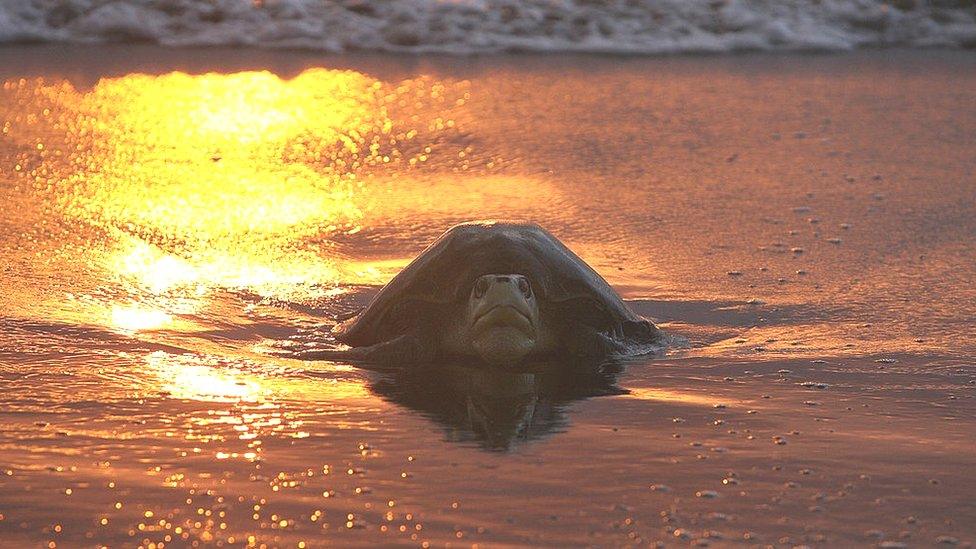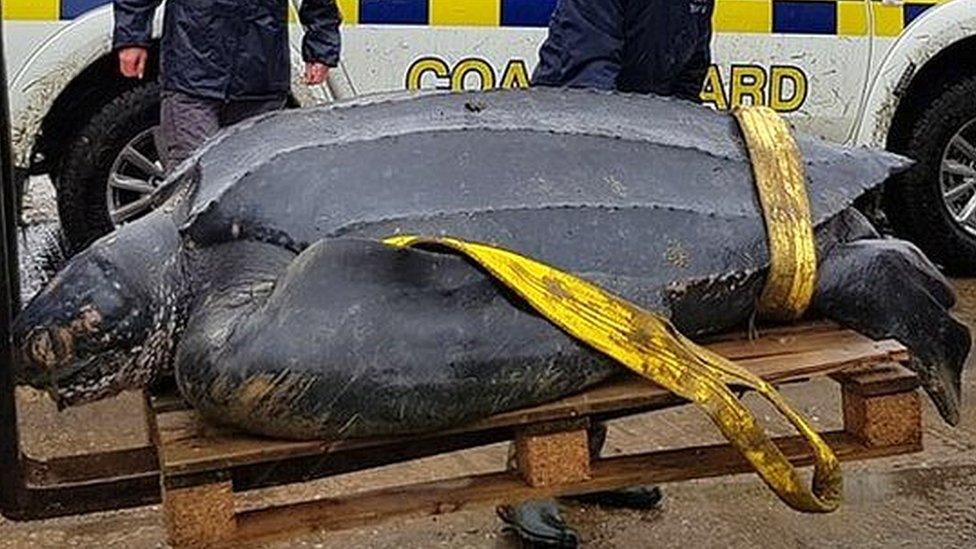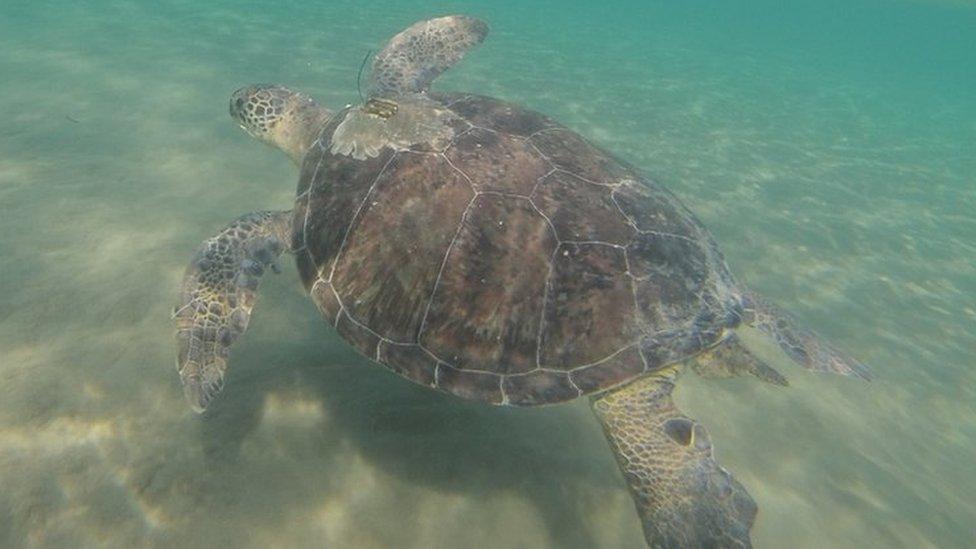Endangered Kemp's ridley turtle washes up on Gower beach
- Published

The turtle was found by a member of the public on Wednesday
A critically endangered turtle has died after being found washed up on a beach in Wales.
A member of the public found the Kemp's ridley sea turtle on Llangennith beach on Gower, Swansea, on Wednesday.
It is the most endangered of the world's seven turtle species and only nine have previously washed up in the UK.
Swansea University fellow and wildlife biologist Lizzie Daly said the turtle washing up was "significant".

The turtle will be examined to determine its cause of death
She said: "There's no real injuries, the cause of death was probably cold water shock. That has been a cause in previous cases.
"They can be quite widespread but this time of year they should be towards the Gulf of Mexico. I think right now they should be nesting on the beaches on the US coast."
The turtle was found by a member of the public while walking on the beach and contacted Swansea University's biology team and Natural Resources Wales's (NRW) marine standings team.
NRW will now store the turtle before tests to attempt to work out why the turtle died.

What is a Kemp's ridley turtle?

Kemp's ridleys are the rarest of all the marine turtles, and were close to extinction in the 1980s.
Adult Kemp's ridleys have an almost completely round carapace - or shell - measuring about 70cm (2ft 4in) long, and they weigh approximately 40kg (88lb).
Kemp's ridleys feed on bottom-living crabs, clams, mussels and shrimps.
They are mostly limited to the Gulf of Mexico.
The only major breeding site for Kemp's ridleys is on a stretch of beach at Rancho Nuevo in Mexico.
The population was decimated by egg harvesting, hunting of nesting females and by the accidental drowning of thousands of turtles in shrimp trawl nets in the Gulf of Mexico.
The nesting population of female Kemp's ridleys was down to a few hundred nesting females laying approximately 700 nests in 1985.
The Kemp's ridley population is slowly recovering and now approximately 10,000 nests are laid at Rancho Nuevo each year.
Source: Marine Conservation Society

- Published13 December 2019

- Published9 August 2019
